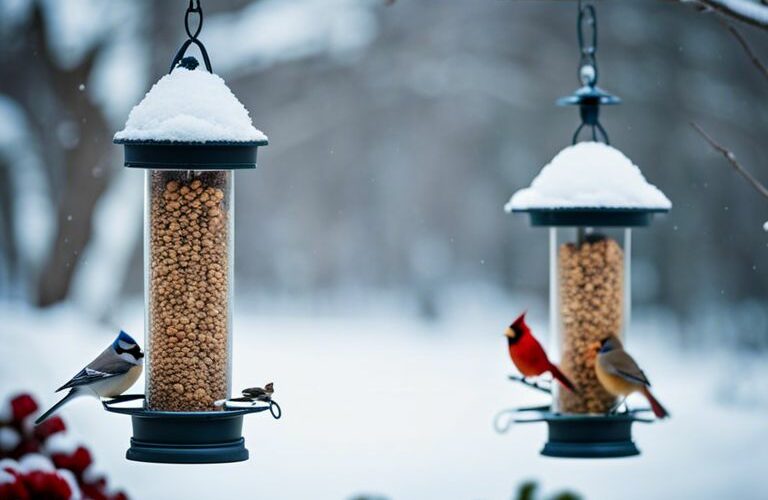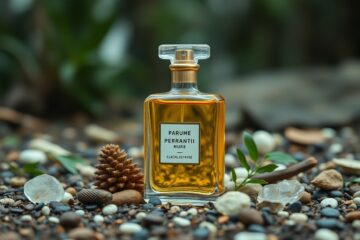There’s something truly magical about watching birds flutter and chirp around your yard, especially during the winter months when food and shelter are scarce. By creating a bird-friendly environment, you can attract a diverse range of bird species right to your doorstep. Providing a reliable source of food, fresh water, and suitable shelter are important components to successfully attracting and keeping birds in your yard throughout the winter season. Learn how to transform your outdoor space into a bird sanctuary with these helpful tips and tricks.
Table of Contents
Key Takeaways:
- Offer a variety of food: Provide different types of bird feed such as seeds, suet, and fruit to attract a wider range of bird species.
- Provide fresh water: Birds need water for drinking and bathing, especially during the winter when natural sources may be frozen.
- Create shelter: Plant native shrubs and trees or put up birdhouses to give birds a place to rest and seek shelter from harsh weather.
- Keep feeders clean: Regularly clean bird feeders and baths to prevent the spread of disease among birds that visit your yard.
- Avoid pesticides: Refrain from using pesticides in your yard as they can be harmful to birds and other wildlife. Opt for natural alternatives to maintain a bird-friendly environment.
Understanding Winter Bird Behavior
A key aspect of attracting a variety of birds to your yard in the winter is understanding their behavior during this season. By knowing how birds adapt to the colder months, you can provide them with the necessary resources to thrive in your outdoor space.
Migration Patterns
On their instinctual journey south for the winter, many bird species will pass through yards and gardens in search of food and shelter. Understanding these migration patterns can help you anticipate when certain species might visit your area. Some birds may travel long distances while others might only shift to nearby habitats. Providing a diverse array of food sources and appropriate shelter can attract a wider range of migrating birds to your yard.
Winter is a challenging time for birds as resources become scarcer. Changes in habitat and food availability drive many species to venture beyond their usual territories in search of sustenance. By catering to their needs during this critical period, you can create a welcoming environment that encourages these travelers to frequent your yard.
Changes in Feeding Habits
Habits can drastically change during the winter months as certain foods become scarce and birds must alter their diets to survive. Many birds will switch from primarily insect-based diets to feeding on seeds, berries, and suet. Providing a variety of bird feeders with different types of seeds and nuts can attract a diverse mix of species to your yard. Additionally, offering fresh water sources can be crucial as natural water supplies may be frozen over.
This shift in feeding habits is crucial for birds to sustain their energy levels during the winter months. Consistently replenishing feeders and ensuring a clean water source is available can help support the health and well-being of visiting birds.
Designing a Bird-Friendly Yard
While attracting birds to your yard during the winter months can be a rewarding experience, it is vital to create a bird-friendly environment that meets their needs for food, water, shelter, and nesting sites. Designing your yard with these elements in mind can help attract a variety of bird species and provide a safe haven for them during the colder months.
Essential Elements of Habitat
Birds require specific elements in their habitat to thrive and survive in the winter. Providing a diverse range of native plants that offer food sources like seeds, berries, and nuts is crucial. Additionally, having a water source such as a birdbath or small pond can help birds stay hydrated when natural water sources are frozen over. Creating different levels in your yard with trees, shrubs, and ground cover will provide different birds with suitable nesting sites and protection from predators.
Safe Shelters for Harsh Weather
In the winter, birds need shelter to protect themselves from harsh weather conditions such as snow, wind, and cold temperatures. Installing birdhouses or nest boxes can provide safe shelters for birds to roost in overnight or during extreme weather events. It is important to place these shelters in a quiet and undisturbed area of your yard, away from potential threats like predators or human disturbances.
Yard structures such as evergreen trees or dense shrubs can also offer protection for birds seeking refuge from the elements. These dense plantings provide insulation and windbreaks that can help birds conserve energy and stay warm during the winter months.
Plus, keeping feeders filled with high-energy foods like suet and black oil sunflower seeds can supplement natural food sources and attract a wider variety of bird species to your yard.
Providing Food for Winter Birds
After the leaves have fallen and the temperatures begin to drop, birds rely on food sources in our yards to survive the winter months. By providing a variety of bird feeders and food, you can attract a wide range of bird species to your yard, bringing life and color to your winter landscape.
Types of Bird Feeders and Food
Providing different types of bird feeders and food can attract a diverse group of birds to your yard. Some popular options include tube feeders, hopper feeders, platform feeders, and suet feeders. Each type caters to different bird species and feeding habits, so offering a mix can attract a wider variety of birds. In the context of bird food, options like black-oil sunflower seeds, nyjer seeds, suet, mealworms, and fruit can appeal to different bird species with varied diets.
- Black-oil sunflower seeds are a favorite among many backyard birds like finches, chickadees, and cardinals.
- Nyjer seeds are loved by finches, sparrows, and doves.
- Suet is a high-energy food source that attracts woodpeckers, nuthatches, and chickadees.
- Mealworms are a protein-rich option that can entice bluebirds, robins, and thrushes.
- Fruit like berries or sliced apples can attract orioles, waxwings, and tanagers.
Recognizing the specific preferences of different bird species can help you cater to a wide range of visitors throughout the winter season.
Maintaining Supply and Safety
Bird feeders need to be regularly cleaned and refilled to ensure a steady supply of food for winter birds. Dirty feeders can spread disease, so cleaning them every 2 weeks with a solution of 1 part bleach to 9 parts water is important. Keeping feeders well-stocked is crucial, especially during harsh winter weather when natural food sources may be scarce.
With proper maintenance and monitoring, you can provide a safe and reliable food source for winter birds, helping them thrive during the colder months. Remember to place feeders away from potential predators like cats and ensure they are sturdy enough to withstand winter winds and snow. By creating a welcoming and nourishing environment, you can enjoy the beauty and activity of winter birds in your own backyard.
Fresh Water Sources
To attract a variety of birds to your yard in the winter, providing fresh water sources is imperative. Birds need access to water for drinking and bathing, even in colder temperatures. By offering a reliable source of water, you can create a welcoming environment for birds to visit and stay in your yard throughout the winter months.
Importance of Water in Winter
With natural water sources frozen or scarce during winter, providing fresh water becomes even more critical for birds’ survival. Birds require water not only for drinking but also for maintaining their feathers and staying clean. Having access to water helps birds regulate their body temperature in the cold weather, keeping them healthy and hydrated.
In addition to its practical importance, water can also attract a wider variety of birds to your yard. Birds are more likely to visit a location where they can find water easily, increasing the diversity of species you may see during the winter months.
Tips for Keeping Water Ice-Free
When temperatures drop, keeping water from freezing can be a challenge. One effective way to prevent water from freezing is by using a heated bird bath or adding a bird bath heater to your existing water source. These devices help maintain the water temperature above freezing, ensuring birds have access to liquid water even in the coldest weather.
Another tip to keep water ice-free is to place a floating ball in the bird bath. The movement created by the ball can help prevent the water from freezing completely. Regularly check and refill the water in the bird bath to ensure birds always have a fresh water source available. Though it may require extra effort, providing unfrozen water can make a significant difference in attracting and supporting birds during the winter.
In addition to these tips, you can also consider adding rocks or branches to the bird bath. These provide perches for birds to land on while they drink or bathe, making the water source more inviting and accessible. Bear in mind, consistency is key in maintaining a reliable water source for birds throughout the winter.
Attracting Specific Bird Species
Your yard can become a haven for a variety of bird species during the winter months with some strategic planning and nurturing. By understanding the preferences of native birds and planting the right flora, you can attract a diverse range of feathered visitors to delight in and observe.
Native Birds and Their Preferences
Preferences can vary among different bird species based on factors such as food sources, water availability, and nesting habits. Some native birds, like chickadees and nuthatches, prefer suet feeders and sunflower seeds, while others like juncos and sparrows prefer ground-feeding with millet or cracked corn. Providing a mix of feeders and seed types can cater to a broader range of native birds.
Native birds also have preferences for natural habitat features. Species like cardinals are attracted to dense shrubs for nesting, while woodpeckers look for mature trees with cavities for their homes. By incorporating a variety of plantings and creating different levels of vegetation in your yard, you can cater to the specific needs of various native bird species.
Plants That Attract Diverse Species
An assortment of plants in your yard can significantly increase the diversity of bird species that visit. Native plants such as coneflowers, serviceberries, and oak trees provide food sources like berries, nuts, and insects that attract a wide range of birds. Trees and bushes with berries can sustain birds through the winter months when food is scarce.
Species like hummingbirds are drawn to brightly colored tubular flowers such as bee balm and trumpet vine for their nectar. By including a mix of flowering plants that bloom at different times of the year, you can provide a continuous food source for birds throughout the seasons. Consider planting a variety of shrubs, trees, and flowers to create a diverse and bird-friendly environment in your yard.
To Wrap Up
Considering all points, attracting a variety of birds to your yard in the winter can be a rewarding and enjoyable experience. By providing a diverse array of bird feeders, fresh water sources, and shelter options, you can create a welcoming habitat for different bird species during the colder months. Remember to offer a mix of seeds, suet, and fruits to cater to the various dietary preferences of birds. With some patience and dedication to maintaining your bird-friendly yard, you can delight in the sights and sounds of a bustling avian community throughout the winter season.
FAQ
Q: Why is it important to attract a variety of birds to your yard in the winter?
A: Attracting a variety of birds to your yard in the winter can help create a more vibrant and diverse ecosystem. Birds play a crucial role in pest control, pollination, and seed dispersal, which can benefit your garden and the environment as a whole.
Q: What types of food should I offer to attract birds to my yard in the winter?
A: To attract a variety of birds to your yard in the winter, offer a diverse range of foods such as seeds, suet, nuts, fruits, and mealworms. Different bird species have different dietary preferences, so offering a variety of foods can attract a wider range of birds.
Q: How can I provide water for birds during the winter months?
A: Providing water for birds during the winter months is crucial as natural water sources may be frozen. Invest in a heated bird bath or regularly replace the water in a non-heated bird bath to ensure birds have access to water for drinking and bathing.
Q: How can I create a bird-friendly habitat in my yard?
A: To create a bird-friendly habitat in your yard, plant a variety of native plants, trees, and shrubs that provide food, shelter, and nesting sites for birds. Avoid using pesticides and chemicals that can harm birds and their food sources.
Q: Are there any tips for making my yard safer for birds in the winter?
A: To make your yard safer for birds in the winter, keep your feeders and bird baths clean to prevent the spread of diseases. Minimize the use of artificial lights at night to avoid disorienting birds, and place decals on windows to prevent bird collisions.

Our contributing author is a passionate advocate for eco-friendly living and sustainability. With a background in eco-life, they are dedicated to inspiring and empowering individuals to adopt environmentally conscious lifestyles. Through insightful articles, they share practical tips, innovative solutions, and thought-provoking perspectives to promote a greener, more sustainable world. Join them on the journey towards eco-smart living and discover how small choices can make a big impact. 🌱








